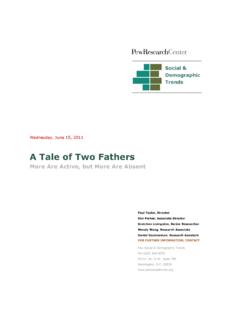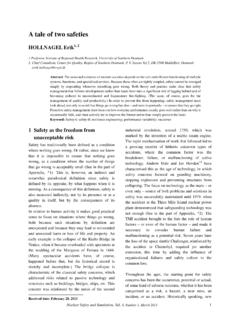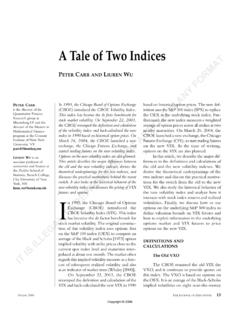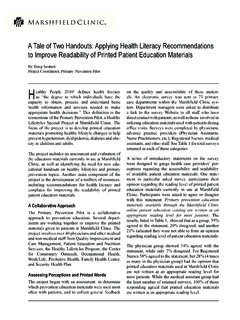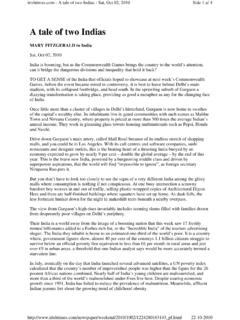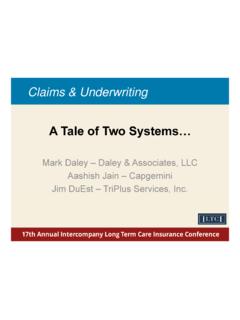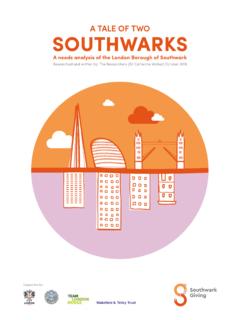Transcription of Tale of Two Economics Finalv3 - Fred Foldvary
1 The tale of two Economies A Comparative Macroeconomic Analysis of Palo Alto and East Palo Alto By: Aditya Kotak, Safwan Siddiqi, and Professor Fred Foldvary | | Abstract: Cities in the USA have experienced diverse growth rates and levels of prosperity. Some cities flourish in prosperity, while others suffer economic recession. This study examines why cities have had different outcomes. We investigated three elements: 1) What are the factors that play a role in the shaping of a municipal's economy? 2) What are the implications of these factors? 3) Which policies promote economic growth and prosperity? This essay aims to offer policy directions for cities that are not performing well.
2 The paper applies a comparative analysis of two nearby cities, a flourishing economy contrasted with a troubled economy. This study is intended to set up a learning model for voters and policy makers in such cities. This study focuses on four major elements that affect economic prosperity: real estate, the police force, the budget allocation, and education. This paper concludes that real estate is the best indicator for a city's economic prosperity. We offer methods to increase land values through policy initiatives in the three other categories. Introduction We, Aditya Kotak and Safwan Siddiqi, are two students at Lynbrook High School with a profound interest in understanding what makes local economies thrive as well as what makes them fail.
3 With our knowledge and resources, we decided to compare and contrast the economies of two neighboring cities: East Palo Alto and Palo Alto. We contacted Professor Fred Foldvary at San Jose State University's Department of Economics to supervise our research. Palo Alto, home to Stanford University, one of the world's most prestigious institutions, has a thriving economy with high land values, low crime rates, sophisticated budget allocations, high test scores and low dropout rates. On the other hand, East Palo Alto suffers from several economic problems, including high crime rates, less sophisticated budget allocations, low test scores, and high dropout rates.
4 These negative elements are reflected in the relatively lower land values of East Palo Alto. Since GDP for cities is not readily measured, we decided to measure the success of the two cities' economies by examining four categories: real estate, the police force, budget allocations, and education. For real estate, we documented both cities' retailing, demographics, industry, and land values. This was the most vital category in determining the success of the two economies. For the police force, we documented the crime rates, the police budgeting, the police department's structure and neighborhood watch groups of both cities. This was the second most important category in evaluating the health of the two cities' economies.
5 For budget allocations, we documented government spending, government budgeting, and spending done by the residents of both cities. Lastly, for education, we documented the schooling situations including the number of schools, the average test scores, and the dropout rates of both cities. We also looked at why test scores are important for land value. After all of our data collection, we ran regressions on the data we collected from the four categories and their subcategories, and we found patterns in both economies. From these patterns, we discovered a number of actions that can be taken by city governments to improve their economies. Part I: Real Estate Introduction We found real estate to be an important indicator of the success of a city's economy.
6 Real estate touches all the finances of living in or working in a city. Land values provide a measure of how attractive is the location. The level of land values and their rates of change reveal whether its economy is thriving or failing. In order to get an understanding of real estate, we focused on the retail industry, geography and population, and land values. Retail Industry Retail is the process of selling goods and services. Consumer spending, done in the retail industry, accounts for over 70% of the national GDP, as measured by the final sale of goods within a year. Thus the amount spent by consumers gives a measure of how much households are contributing to the flow of the economy.
7 To compare the consumer spending done in each city, we calculated an average consumer spending per resident. In order to calculate that, we took the revenue from the sales tax, and then divided that by the city tax percentage, reaching the total consumer spending done in the fiscal year. To avoid proportionality error, we divided the values for the total consumer spending by the respective city's population to calculate average spending per capita. For Palo Alto, the average spending per capita was $14, , while the average for East Palo Alto was $7, The average spending in Palo Alto is more than twice that in East Palo Alto, proving that Palo Alto residents contribute to the flow of their city's economy significantly more than East Palo Alto residents do.
8 The reason there is so much more spending in Palo Alto is not only because the residents have more money to spend. Palo Alto also has more attractions such as Stanford University and Stanford Mall, attractions that bring more people to spend more money in Palo Alto. East Palo Alto hardly had any attraction of any kind until the Ravenswood 101 (including a Home Depot, Best Buy, and an IKEA store) shopping center was created in 2000. This attracted people from various areas. For many Bay Area residents, the nearest IKEA was now in East Palo Alto. The creation of the Ravenswood 101 has greatly increased consumer spending in East Palo Alto. To further increase the consumer spending, the city should create a tertiary educational institution in East Palo Alto, so that the city can obtain income through college education the way Palo Alto does through Stanford.
9 East Palo Alto currently does not have a single tertiary educational institution. Moreover, if the city was to create a community college, unemployed residents would have a greater incentive to obtain an education and consequently, reduce the city's unemployment rate. Geography and Population The geography of Palo Alto and East Palo Alto is notable because even though the two cities border each other, they are in different counties. The populations of the two cities are largely different, as seen in the cities' distinctly different demographics, which are measured every 10 years in the census. The geography and population are two factors that drive the public appeal of the city.
10 A summary of our findings can be found in Figure : Figure Demographics of Palo Alto and East Palo Alto As the Asian and white populations grew in East Palo Alto, the dropout rates from the city decreased. In the regression comparing dropout rates to demographics, there is a substantial inverse correlation between the dropout rates and the white and Asian populations. On the contrary, the Hispanic population is correlated with a higher dropout rate. The correlation of higher dropout rates with the demographics is mirrored inversely by the correlation of higher test scores with the demographics. Land Values Land values are the estimated market prices of land.

